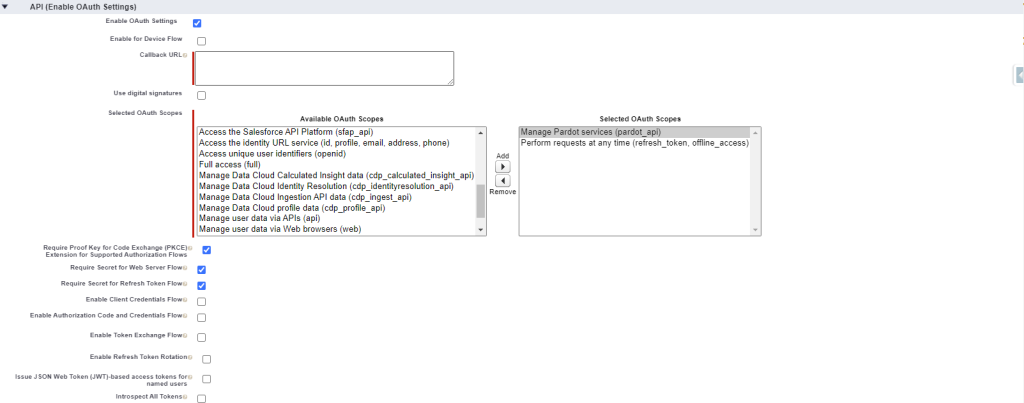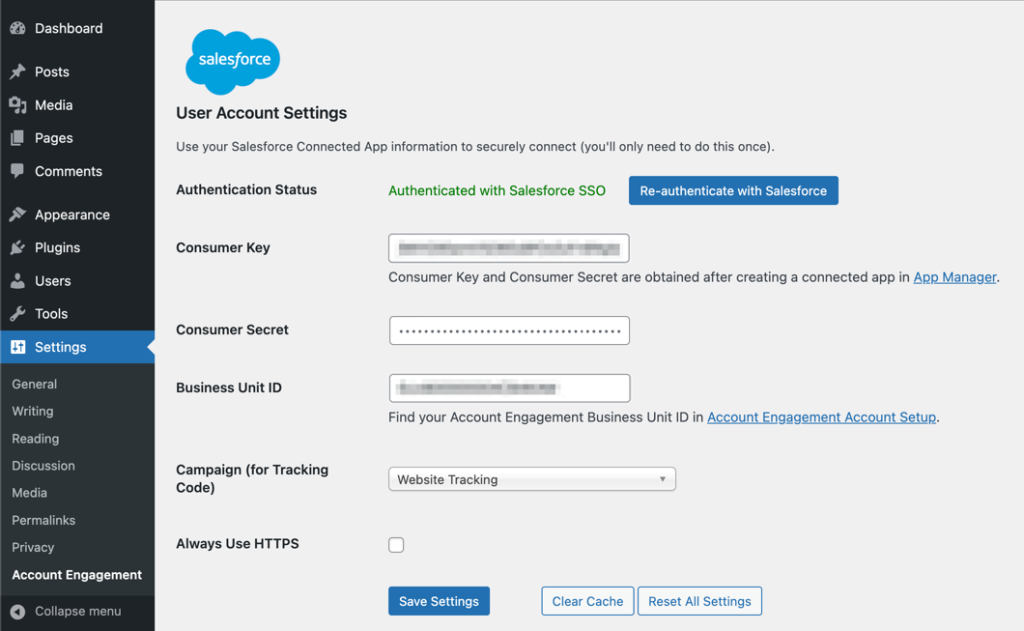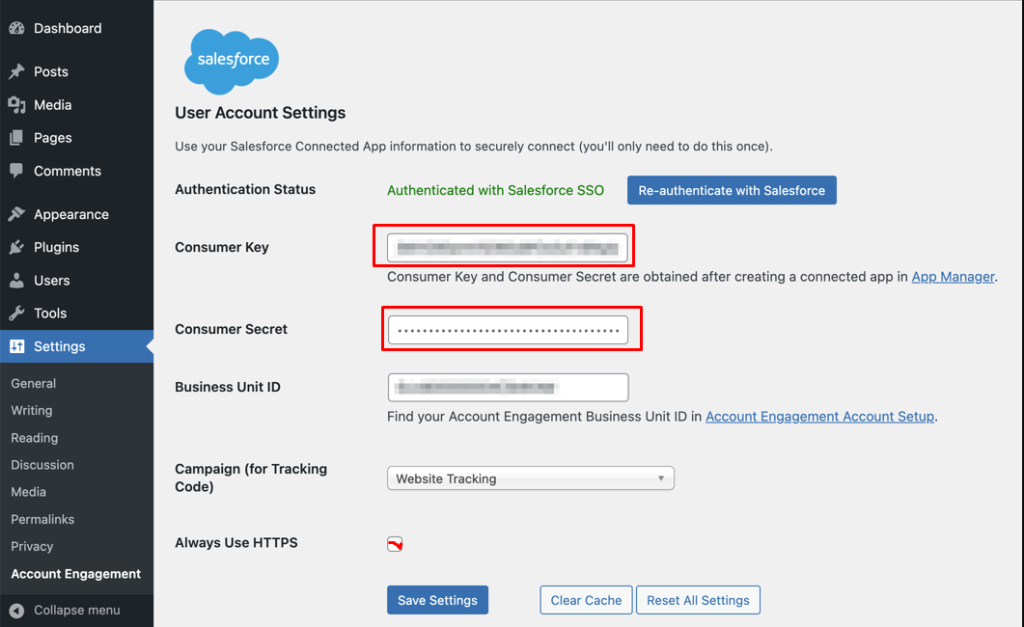Integrate WordPress with Salesforce Pardot Using Single Sign-On (SSO)
Integrating WordPress with Salesforce’s Account Engagement (formerly Pardot) using Single Sign-On (SSO) allows for seamless user management and enhanced security. Follow these steps to set up the integration.
Step 1: Download and Install the Account Engagement Plugin
- Log into WordPress:
- Navigate to the WordPress admin dashboard.
- Go to the Plugins section.
- Install the Plugin:
- Click on Add New.
- Search for Account Engagement.
- Locate the correct plugin (it should look like the screenshot below) and click Install Now.
- After installation, navigate to the Plugins tab, find the Account Engagement plugin, and click Activate.
Step 2: Configure Your Salesforce Connected App
- Log into Salesforce:
- Open a new tab and log into your Salesforce account.
- Navigate to Setup.
- Create a Connected App:
- In the Quick Find box, type App Manager.
- Click on New Connected App in the top right corner.
- Fill in the basic information section.
- Set Up OAuth Settings:
- Check Enable OAuth Settings.
- Enter the callback URL provided by the Account Engagement plugin. This URL typically looks like: https://[YourWordPressDomain]/wp-admin/options-general.php?page=pardot.
- Under Selected OAuth Scopes, select:
- Manage Pardot Services (pardot_api)
- Perform requests at any time (refresh_token, offline_access)
- Save the Connected App:
- Check the box for Require Secret for Web Server Flow.
- Click Save. The consumer key and secret will be generated and displayed.
Step 3: Configure the Account Engagement Plugin in WordPress
1. Open Plugin Settings:
- Go back to the WordPress tab with the Account Engagement plugin settings open.
- Change the authentication type to SSO.
2. Enter Salesforce Credentials:
- Copy the consumer key and customer secret from Salesforce.
- Paste these values into the appropriate fields in the Account Engagement plugin settings.
3. Find Your Business Unit ID:
- In Salesforce, navigate to Setup, then search for Account Engagement.
- Go to Business Unit Setup and locate your Business Unit ID.
- Enter this ID into the Account Engagement plugin settings in WordPress.
4. Authenticate with Salesforce:
- Click Authenticate with Salesforce.
- If prompted, log into your Salesforce account to complete the authentication process.
- Once authenticated, the status should indicate Authenticated with Salesforce SSO.
5. Select Campaign for Tracking:
- Choose the campaign for tracking code within the plugin settings.
- Click Save.
Step 4: Embed Forms and Dynamic Content
1. Add Content to Your Site:
- After successful setup, a blue Salesforce button will be added to your WordPress text editor.
- Click this button to embed forms and dynamic content from your Account Engagement instance.
2. Select Content:
- A window will appear, allowing you to choose either a form or dynamic content to embed.
3. Troubleshooting:
- If content does not appear as expected, go back to the plugin settings and clear the cache.
Conclusion
By following these steps, you’ve successfully integrated WordPress with Salesforce’s Account Engagement using SSO. This setup not only simplifies user authentication but also leverages the powerful personalization and automation capabilities of Pardot right on your WordPress site.
Feel free to leave any questions or share your unique use cases in the comments below!








